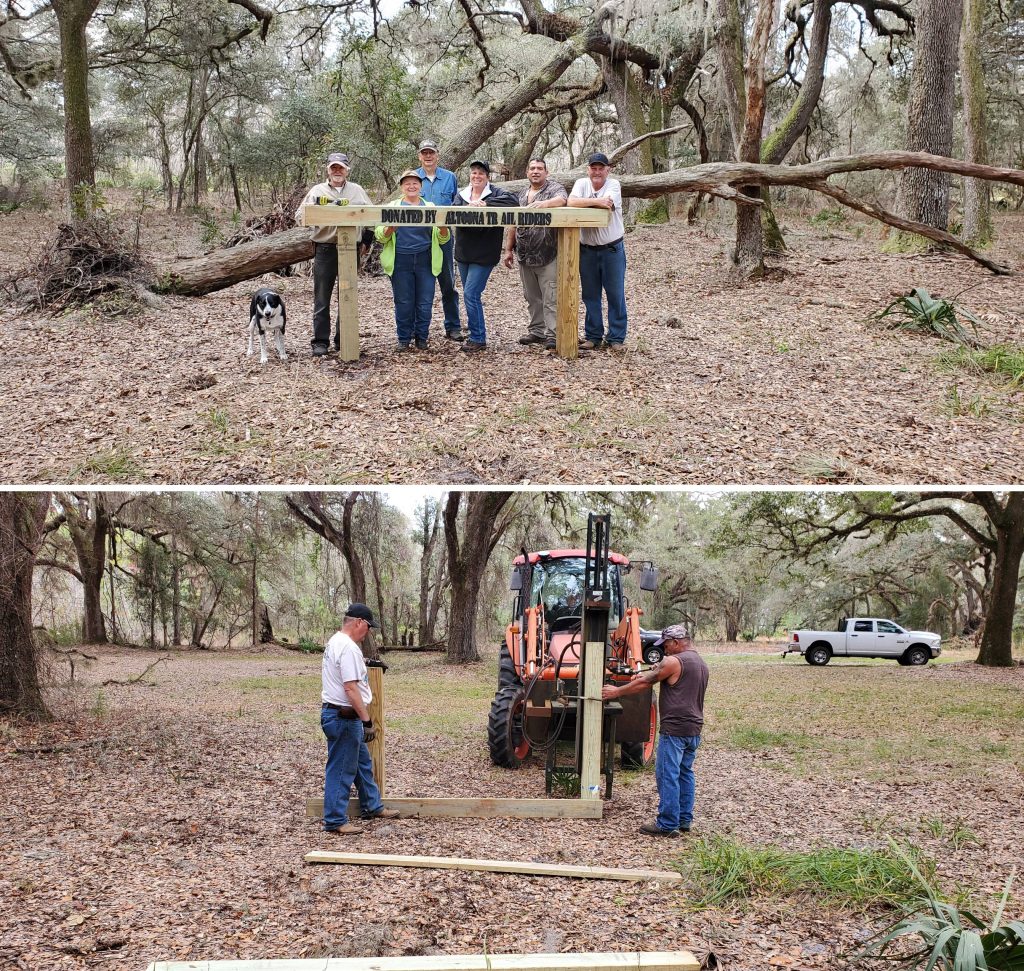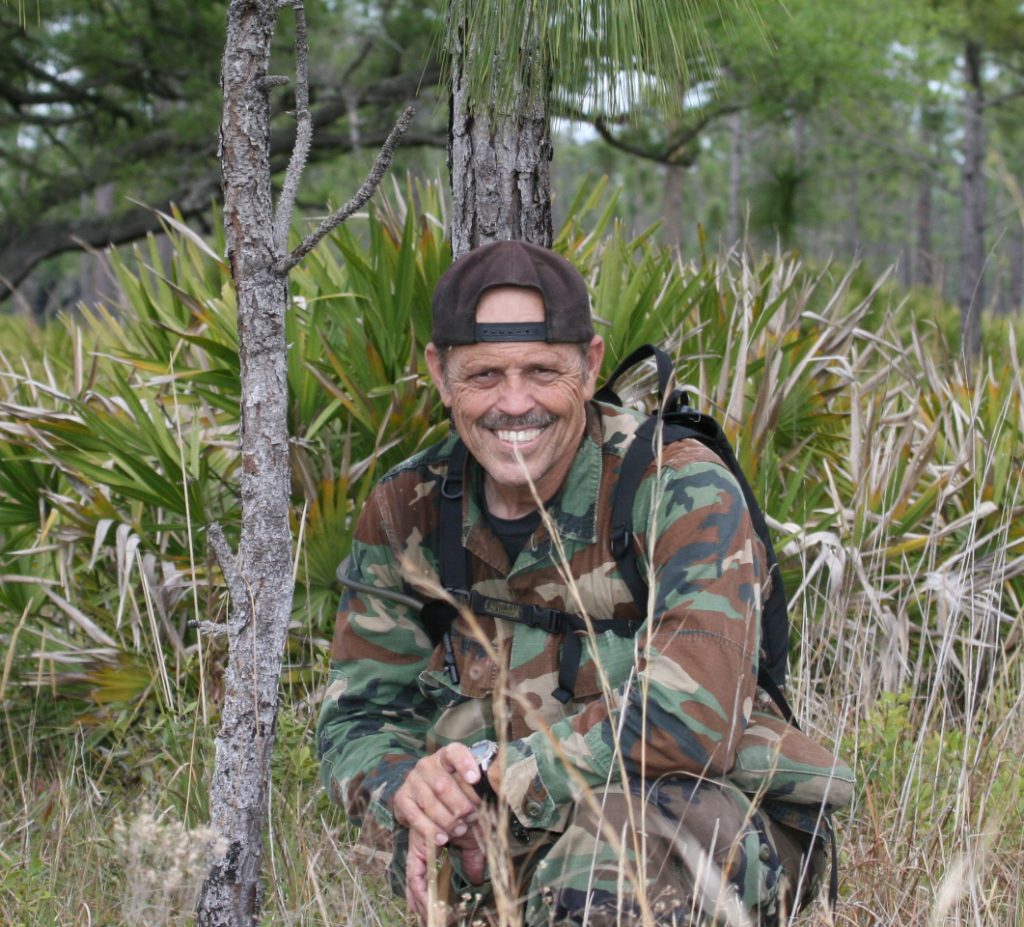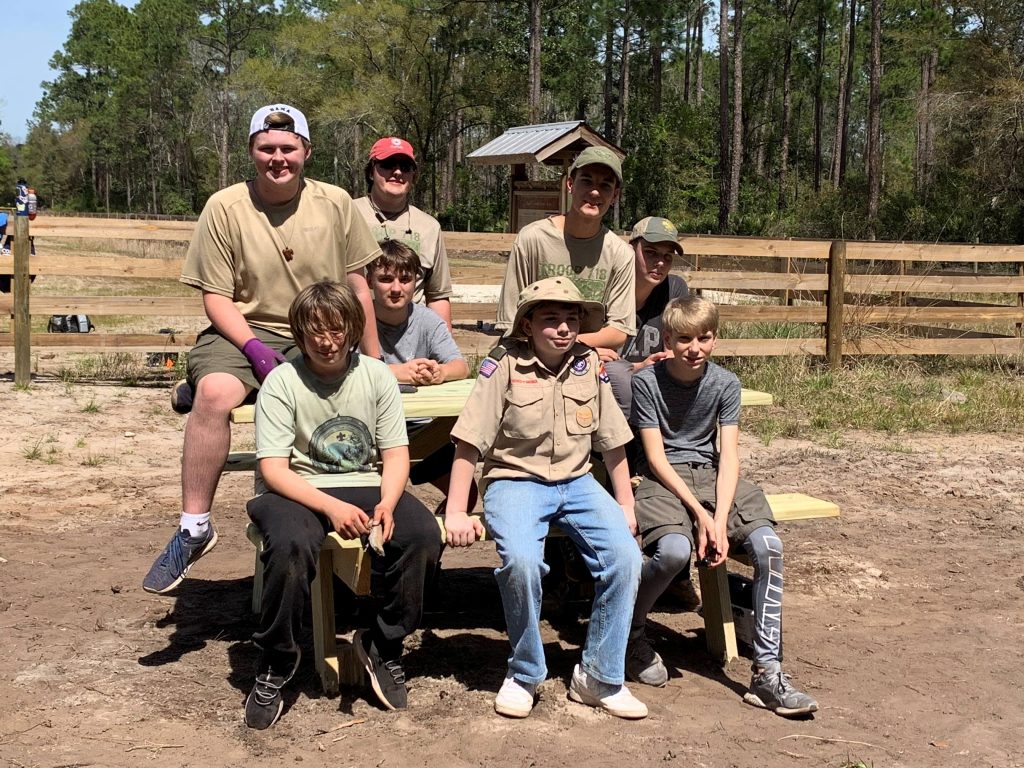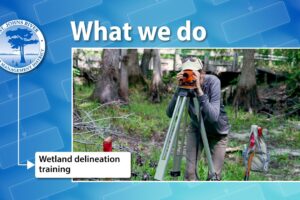Volunteers enrich the District’s mission
Jack Horton has rescued exhausted hikers, fetched bicyclists with broken bicycle chains and flat tires, and even once came to the aid of a woman whose vehicle was struck by lightning. He’s an unsung hero at the St. Johns River Water Management District’s popular Lake Apopka Wildlife Drive at Lake Apopka North Shore.
Horton, a member of the Orange Audubon Society, closes the gates Thursday nights at the wildlife drive and “sweeps” the area of stragglers every Friday, Saturday and Sunday night. The District provided him with lights and magnetic “wildlife patrol” signs for his vehicle to conduct his ritual. His salary? Zero.
“I was raised to believe that you help people and contribute in any way you can,” says Horton, a skilled photographer of the wildlife found at this public property in central Florida. “I really love it out at Lake Apopka Wildlife Drive. The District’s staff are super cool, super nice and make good decisions on how to manage the wildlife drive.”
I was raised to believe that you help people and contribute in any way you can
Horton isn’t alone in his passion for giving back to the community. Throughout the District’s 18-county jurisdiction, hundreds of Floridians donate their time, expertise and energy in countless ways. They plant trees, blaze trails, count and monitor endangered birds, pick up trash and serve as District ambassadors when educating visitors about District lands.
The District’s Bureau of Land Resources is staffed by 36 dedicated individuals who work together to manage more than 400,000 acres of public land the District owns, land set aside to protect Florida’s water resources. Most of the land is open to the public for recreation, including fishing, bicycling, hiking, birdwatching and horseback riding. The regional land management staff of 21 manage the day-to-day operations within the six management regions. Volunteers help with a myriad of tasks, allowing the land managers to focus on the core missions of the District while still providing some extra services and amenities on these lands.
St. Johns River Water Management District Executive Director Dr. Ann Shortelle says she is both thrilled and amazed by the scope of the volunteer movement in the District and the cross-forging of relationships between District staff, volunteers and local communities.
“Our agency is grateful for the hundreds of volunteers whose energy and passion benefit the District and the public resources in our care in so many ways,” Shortelle says. “Volunteers help build relationships between the District and residents and foster community support for our programs and projects.”
Volunteer support at Lake Apopka North Shore and its wildlife drive is particularly robust. Horton is among an army of Orange Audubon Society volunteers who keep the activities running smoothly during busy weekends. It is the largest volunteer group assisting the District.
“These volunteers greet all our visitors, explain the rules and procedures of the wildlife drive, answer visitor questions, and distribute trail brochures,” says Land Manager Maria Zondervan, who works closely with the organization. “They assist with education and outreach and are highly knowledgeable about the property and the District’s efforts to clean up Lake Apopka. Each volunteer undergoes training before being assigned shifts.”
In addition to the work of Orange Audubon, volunteers with Audubon’s Eagle Watch program monitor 12 known eagle nests on Lake Apopka North Shore. Another volunteer, Dan Cleary, has devoted hundreds of hours over the years using his carpentry talents to build kiosks, benches and garbage containers. He has also helped with tree plantings, trash cleanups and similar projects.
Elsewhere on District lands, individuals and groups dedicate countless hours assisting the District while pursing personal passions.
Volunteer Danny Bales says he practically lives with the endangered red-cockaded woodpeckers living at Hal Scott Preserve and Park in Orange County. He’s not your typical birder. He thinks nothing of crawling through thickets dressed in camouflage to get inside the birds’ habitat. He records their movements, the births of hatchlings or occurrences of the woodpeckers hollowing new cavities in trees.
The District’s Governing Board has recognized Bales’ contributions and Zondervan credits his keen observations and camera work in playing a significant role in helping the endangered woodpecker population recover.
“Danny alerts us to possible injuries, individual traits, new cavities and nests in trees and so much more,” Zondervan says. “Staff time for bird observations is very limited, so we rely heavily on Danny to provide crucial information about bird locations, breeding status, home ranges and juvenile survival rates. He has literally put in thousands of hours with these birds, freeing up staff time to focus on habitat improvements for the woodpeckers.”
At Lake Monroe Conservation Area in Volusia County, groups of dedicated women who call themselves “the scrubbers” monitor threatened scrub-jays. They also assist with population assessments.
“They help us get the birds conditioned to enter traps, so that we can catch them when needed for leg band placement, relocations or injury treatment,” Zondervan adds.
At Sunnyhill Restoration Area in Marion County, horseback riders keep the trails in tip-top shape, adding mounting blocks on the south tract of the property and adding mounting blocks where none existed on the north tract, says District Land Manger R.H. Davis, who notes that the Boy Scouts replaced the benches at the Heart Island Conservation Area group campsite in Volusia County.
The work of volunteers often dovetails with the District’s mission to protect and restore natural systems.
The Florida Native Plant Society (FNPS) has partnered with the District for many years in its efforts to rescue endangered, native and unique sandhill plants.
“Many of these plants are dug up in areas being developed in Lake County and replanted at Lake Apopka North Shore,” Zondervan says. “Other plants are taken to other suitable locations, and some are brought to a plant nursery where they are propagated to produce more plants for sites like the Lake Apopka North Shore. The FNPS’s efforts have helped restore several acres of sandhill at Lake Apopka North Shore.”
To the many volunteers who share the District’s passion and commitment to public lands, we send a heartfelt thank you!
Learn more about the District’s properties here.








